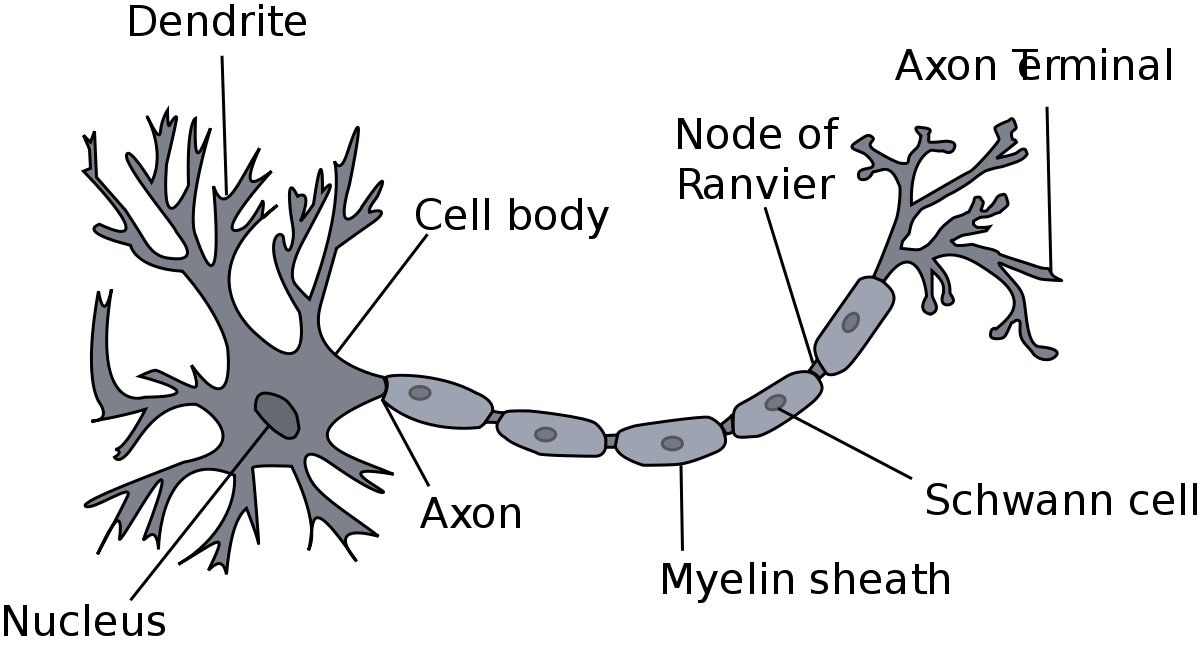
Given below is a type of neuron and is found in

A)Retina
B)Hydra
C)Cerebral cortex
D)Embryonic stage

Answer
545.1k+ views
Hint: Neuron is a cell that can be excited electrically and can also transmit this excitation to other cells by means of specialized connections known as synapses. Neurons are present in all animals with two exceptions, sponges and placozoa and absent in plants and fungi.
Complete answer:
Neurons comprise three components- a cell body, dendrites and an axon. The axon and dendrites are filamentous whereas the cell body is compact. Neurons receive signals through the dendrites and pass this signal to the cell body and further down to the axon. Axons extend from the cell body towards the terminal portion of the neuron known as the axon terminal. Signals from the axon terminal are passed to the surrounding neuron by means of synapse.
The signalling is partly electrical and partly chemical. Neurons comprise of voltage gated channels across their membrane, on receiving a signal the voltage changes by a large amount in a small period of time resulting in generation of action potential. The action potentials are then transmitted across the axon and reach the neighbouring neuron. The initial signal may either be excitatory or inhibitory. Neurons may be unipolar, bipolar or multipolar, the given neuron in the question is multipolar as it possesses a single axon and many dendrites. Multipolar neurons are found mostly in the cerebral cortex.
Hence, the correct answer is option (C)
Note: Neurons are classified into three major types on the basis of their function- sensory neurons, motor neurons and interneurons. Sensory neurons respond to stimuli that affect the sensory organs, motor neurons receive signals from brain and spinal cord and transmits to the rest of the body and interneurons connect two or more neurons within the same region.
Complete answer:
Neurons comprise three components- a cell body, dendrites and an axon. The axon and dendrites are filamentous whereas the cell body is compact. Neurons receive signals through the dendrites and pass this signal to the cell body and further down to the axon. Axons extend from the cell body towards the terminal portion of the neuron known as the axon terminal. Signals from the axon terminal are passed to the surrounding neuron by means of synapse.
The signalling is partly electrical and partly chemical. Neurons comprise of voltage gated channels across their membrane, on receiving a signal the voltage changes by a large amount in a small period of time resulting in generation of action potential. The action potentials are then transmitted across the axon and reach the neighbouring neuron. The initial signal may either be excitatory or inhibitory. Neurons may be unipolar, bipolar or multipolar, the given neuron in the question is multipolar as it possesses a single axon and many dendrites. Multipolar neurons are found mostly in the cerebral cortex.
Hence, the correct answer is option (C)
Note: Neurons are classified into three major types on the basis of their function- sensory neurons, motor neurons and interneurons. Sensory neurons respond to stimuli that affect the sensory organs, motor neurons receive signals from brain and spinal cord and transmits to the rest of the body and interneurons connect two or more neurons within the same region.
Recently Updated Pages
Master Class 11 Economics: Engaging Questions & Answers for Success

Master Class 11 English: Engaging Questions & Answers for Success

Master Class 11 Social Science: Engaging Questions & Answers for Success

Master Class 11 Biology: Engaging Questions & Answers for Success

Class 11 Question and Answer - Your Ultimate Solutions Guide

Master Class 11 Business Studies: Engaging Questions & Answers for Success

Trending doubts
10 examples of friction in our daily life

One Metric ton is equal to kg A 10000 B 1000 C 100 class 11 physics CBSE

Difference Between Prokaryotic Cells and Eukaryotic Cells

1 Quintal is equal to a 110 kg b 10 kg c 100kg d 1000 class 11 physics CBSE

Explain zero factorial class 11 maths CBSE

What is a periderm How does periderm formation take class 11 biology CBSE




